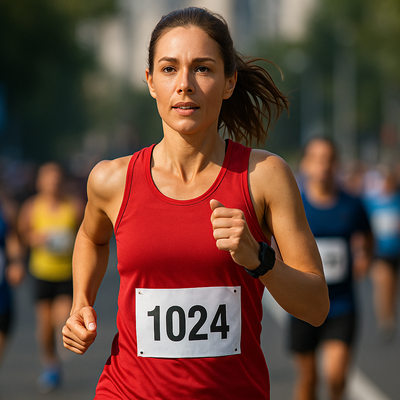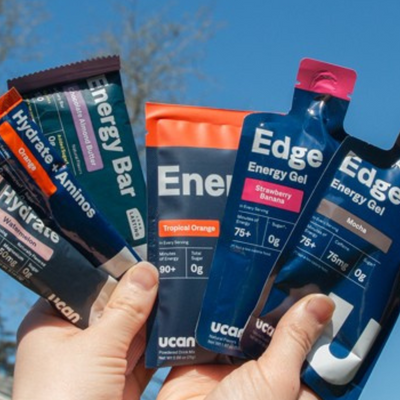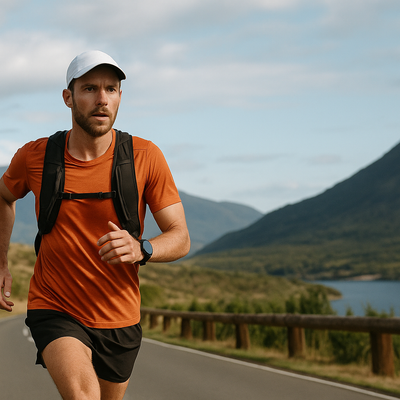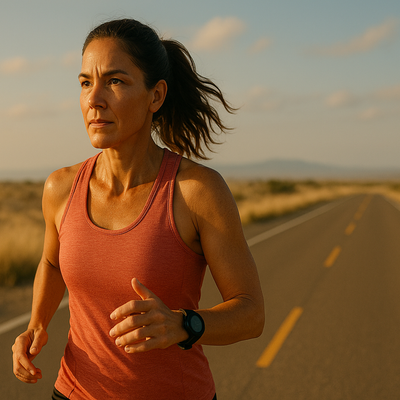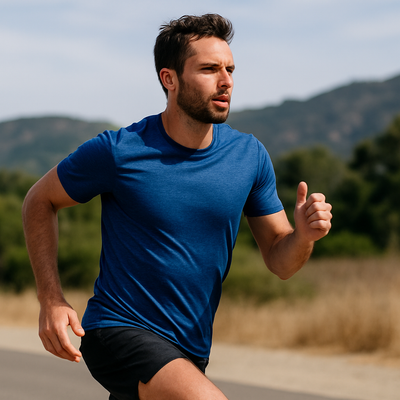As the seasons shift and daylight stretches longer, many endurance athletes begin the exciting transition from indoor gym routines to outdoor training. Whether you're a seasoned marathoner, cyclist, or just getting started with endurance sports, adapting your training regimen to the outdoors offers new challenges and rewards that can elevate both performance and enjoyment.
This guide covers expert strategies, fueling tips, and gear essentials to help you make a smooth training transition. Plus, we’ll show how UCAN products support peak performance, stamina, and recovery every step (or pedal) of the way.
Why Transitioning to Outdoor Training Matters
Indoor training offers controlled conditions, consistent surfaces, and predictable schedules. But outdoor training introduces real-world variability that better simulates race day or natural conditions.
Outdoor training is essential for:
- Building terrain-specific strength and stamina (hills, uneven paths, wind resistance)
- Enhancing mental toughness and adaptability
- Boosting vitamin D levels and overall mood
-
Improving proprioception and balance on diverse surfaces
In fact, a 2020 study published in Frontiers in Psychology found that exercising outdoors was associated with greater feelings of revitalization, increased energy, and decreased tension and fatigue compared to indoor exercise1.
How to Make the Outdoor Training Transition Seamless
1. Start with a Transition Phase
Ease into outdoor training with a hybrid schedule. Alternate gym sessions with short outdoor workouts to acclimate your body.
Pro Tip: Don’t jump straight into intense long runs or rides. Let your muscles, joints, and skin adapt to new environmental stressors.
UCAN Support: Begin your workout with a scoop of UCAN Energy Powder. Its steady-release carbs provide 90+ minutes of clean, sugar-free energy—perfect for endurance athletes making the shift outdoors without risking spikes or crashes.
2. Adapt Your Gear and Clothing
Weather, terrain, and sunlight exposure all factor into outdoor readiness.
- Invest in proper footwear: Trail runners or cycling shoes tailored for terrain.
- Layer appropriately: Lightweight, sweat-wicking gear and UV protection.
-
Don’t forget safety: Reflective vests, lights, and ID tags for early mornings or evenings.
3. Fuel Like It’s Race Day (Because It Might Be)
Outdoor workouts place greater demands on energy reserves, hydration, and recovery. Your fueling strategy needs to evolve with your environment.
Pre-Workout
-
30–45 minutes before: UCAN Edge Energy Gel offers a convenient, mess-free source of long-lasting energy—perfect for runners and cyclists on the go.
During Workout
-
For sessions over 60 minutes: Supplement every 45–60 minutes with another Edge Gel or a scoop of UCAN Energy Powder in your water bottle.
-
Use UCAN Hydrate to replenish electrolytes lost through sweat, with zero sugar and all five essential electrolytes.
Post-Workout
- Combine carbs and protein within 30 minutes post-workout.
- Choose UCAN Protein + Energy or UCAN Hydrate + Aminos to promote muscle recovery and reduce soreness.
-
UCAN Energy Bars are a great grab-and-go option for refueling when you're out and about.
Terrain Tactics: Training Smarter Outside
Outdoor training isn’t just about heading out the door—it’s about optimizing your environment to simulate race conditions and improve performance.
Road Running or Cycling
-
Use time-based intervals (e.g., 3 minutes hard, 2 minutes recovery)
-
Practice pacing with a GPS watch rather than relying on treadmill consistency
Trail Workouts
-
Focus on power hiking, agility drills, and uphill intervals
-
Embrace variable terrain to boost proprioception and ankle stability
Heat Acclimation
If you’re training in hot climates, it can take 7–14 days to acclimate. Gradually increase time spent training outdoors in the heat and stay on top of hydration.
“Heat acclimation improves your body's ability to cool itself, reduces heart rate and perceived exertion, and enhances endurance performance.” – Galloway & Maughan, Journal of Sports Sciences2
Sample 4-Week Transition Plan for Endurance Athletes
| Week | Indoor | Outdoor |
|---|---|---|
| 1 | 3 indoor workouts | 1 outdoor (easy effort) |
| 2 | 2 indoor | 2 outdoor (short intervals outdoors) |
| 3 | 1 indoor | 3 outdoor (add hills and long aerobic effort) |
| 4 | - | All outdoor, include race-pace or tempo intervals |
Remember to listen to your body and scale back if needed.
Recovery Is Training, Too
Training outdoors can lead to higher energy expenditure and more muscle breakdown due to variable surfaces, wind resistance, and elevation.
Prioritize recovery:
- Get 7–9 hours of sleep
- Stretch or foam roll after workouts
- Replenish with UCAN Protein + Energy within 30 minutes post-exercise
- Use UCAN Hydrate + Aminos to support muscle repair and hydration
Outdoor Training Mindset Shift
-
Accept imperfection: Not every route has mile markers. Focus on perceived effort and heart rate zones.
-
Practice mindfulness: Let nature be part of your training—notice your surroundings, breathing, and how your body responds.
-
Track progress: Use Strava, Garmin, or a simple journal to record milestones.
Frequently Asked Questions (FAQ)
Q: How do I know when I’m ready to fully transition outdoors?
A: If you’ve completed 2–3 weeks of consistent outdoor sessions without injury or overtraining symptoms, and you feel comfortable pacing yourself outdoors, you're ready.
Q: What’s the best UCAN product to start with if I’m new to fueling?
A: Try UCAN Energy Powder pre-workout and UCAN Hydrate during to support hydration. If you prefer portability, start with UCAN Edge Gel.
Q: How does outdoor training improve endurance?
A: Training outdoors challenges your cardiovascular and muscular systems in ways indoor training doesn’t—like varied terrain, wind resistance, and temperature shifts. This helps build stamina, mental grit, and aerobic capacity.
Q: Should I still do gym workouts when training outside?
A: Yes! Strength training supports injury prevention and muscular endurance. Aim to incorporate 1–2 strength sessions per week even during peak outdoor seasons.
Q: How do I stay hydrated without carrying a heavy bottle?
A: Use hydration belts or vests, and carry UCAN Hydrate Stick Packs to mix on the go.
Final Thoughts
Transitioning to outdoor training is more than a seasonal shift—it’s a strategic evolution for endurance athletes. By gradually adapting your training, incorporating smart fueling, and embracing nature’s variability, you’ll not only improve performance but rediscover the joy of movement in the open air.
UCAN products are designed to support you at every stage—before, during, and after your training. They’re built on science and trusted by elite athletes to go longer, recover stronger, and feel better doing it.
So lace up, fuel smart, and take your training outside. Nature is waiting.
Footnotes
-
Thompson Coon, J., et al. (2011). Does participating in physical activity in outdoor natural environments have a greater effect on physical and mental wellbeing than physical activity indoors? A systematic review. Environmental Science & Technology. ↩
-
Galloway, S.D.R., & Maughan, R.J. (1997). Effects of ambient temperature on the capacity to perform prolonged cycle exercise in man. Journal of Sports Sciences. ↩


